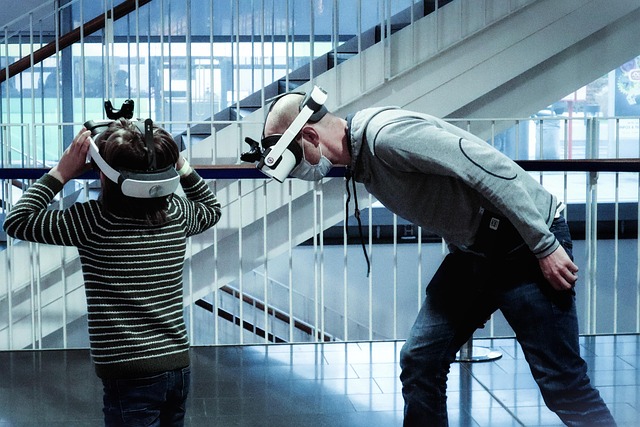As technology continues to evolve, the metaverse has emerged as a vibrant digital landscape where users can interact, create, and explore in ways previously unimaginable. At the forefront of this revolution are immersive technologies like virtual reality (VR) and augmented reality (AR), which are transforming how we experience and interact with our surroundings. One of the most intriguing aspects of this digital evolution is its potential to enhance cognitive spatial perception—a vital skill that enables individuals to navigate their environments, understand spatial relationships, and visualize objects in a three-dimensional space.
Virtual reality offers users a completely immersive experience that transports them into otherworldly settings. Imagine donning a VR headset and instantly finding yourself on a bustling street in Tokyo or in the midst of an ancient civilization. The sensation of being physically present in these environments can significantly enhance cognitive spatial perception. Users are not merely observing a scene but actively engaging with it, allowing for an enriched understanding of navigation and distance. Games and simulations designed in VR often require users to judge lengths, directions, and spatial configurations, improving their ability to think and react spatially.
On the other hand, augmented reality complements our real-world experiences by layering digital information over our physical environments. AR applications can utilize smart glasses or mobile devices to project virtual objects into the real world, creating an interactive experience that enhances our perception of space. For instance, using AR to visualize how furniture would look in your home not only aids in decision-making but also sharpens spatial awareness. This technology allows users to develop a better understanding of size, scale, and positioning of objects within their actual surroundings.
Furthermore, the metaverse presents unique opportunities for training and education. In industries such as architecture, engineering, and healthcare, professionals can leverage simulation software that utilizes VR and AR to create realistic scenarios for training purposes. Imagine an architecture student exploring a full-scale 3D model of a building, walking through hallways, and visualizing the structural elements. This hands-on experience enhances cognitive spatial perception, fostering a deeper understanding of design principles and spatial reasoning.
The implications of enhanced cognitive spatial perception extend beyond educational settings. Professionals in various fields, including urban planning and logistics, can utilize spatial data visualizations within the metaverse to analyze and optimize real-world applications. With the ability to manipulate and visualize data in a three-dimensional space, teams can collaborate more effectively, leading to innovative solutions and efficiency improvements.
As we delve deeper into the metaverse, the integration of VR and AR technologies will continue to redefine our interaction with digital content and the physical world. For many, the metaverse is not just a series of entertaining experiences but a platform that can foster genuine cognitive growth and development. By enhancing cognitive spatial perception, these technologies empower individuals to navigate complex environments, make informed decisions, and develop essential skills that are increasingly relevant in a digitally connected world.
Incorporating VR and AR experiences into daily learning and work routines can pave the way for a future where cognitive spatial perception is not just improved in theory, but cultivated in practice. Embracing these innovative technologies enables us to view the world—and the potential it holds—through a vividly enhanced lens.




